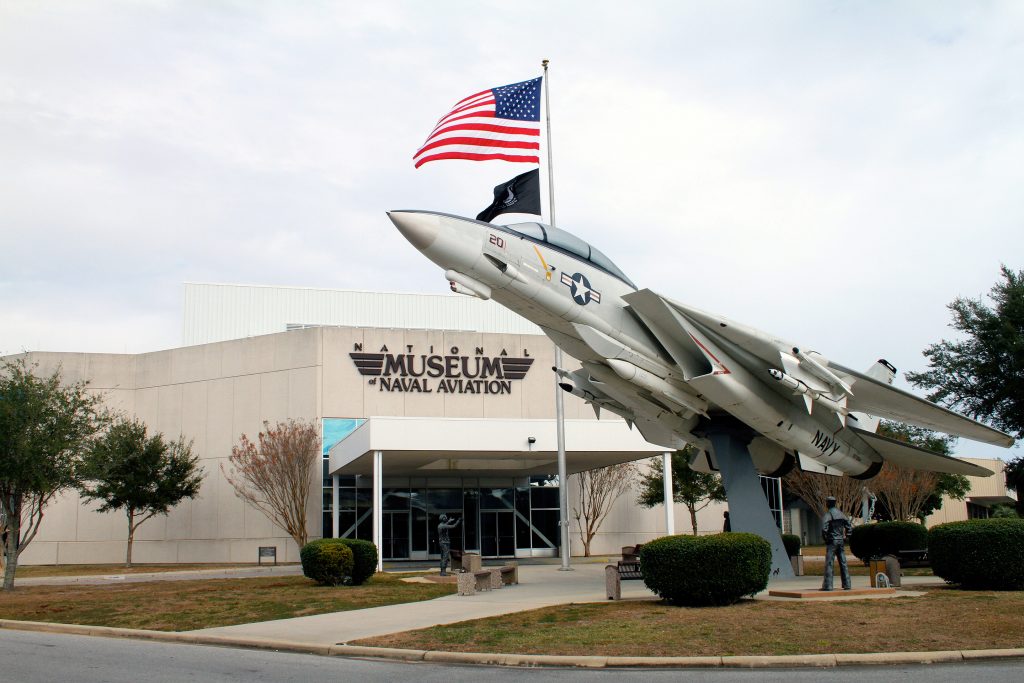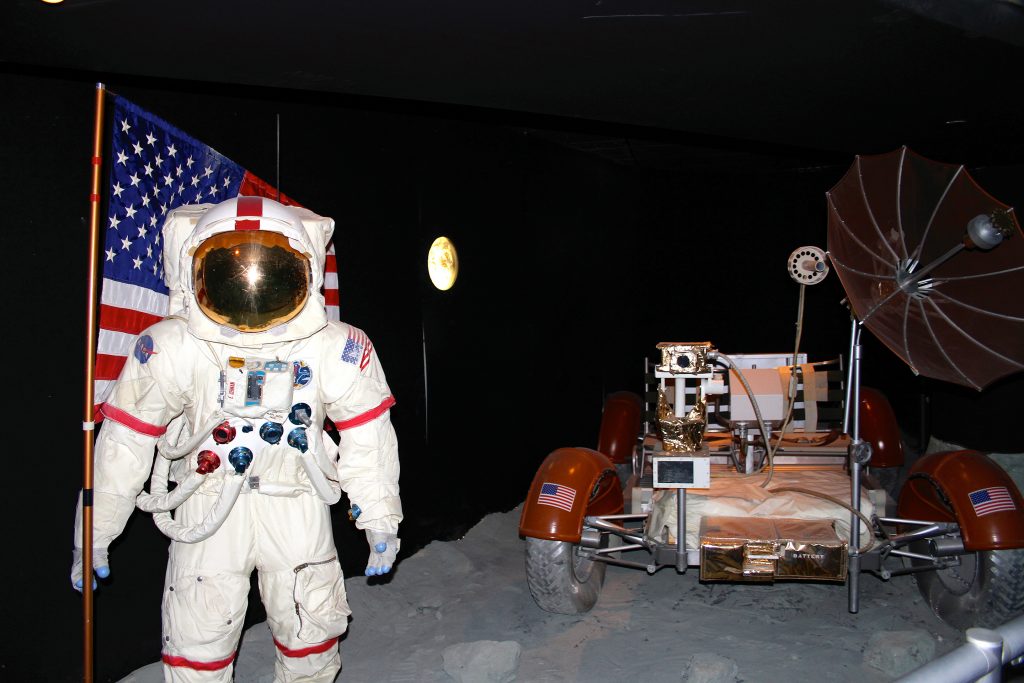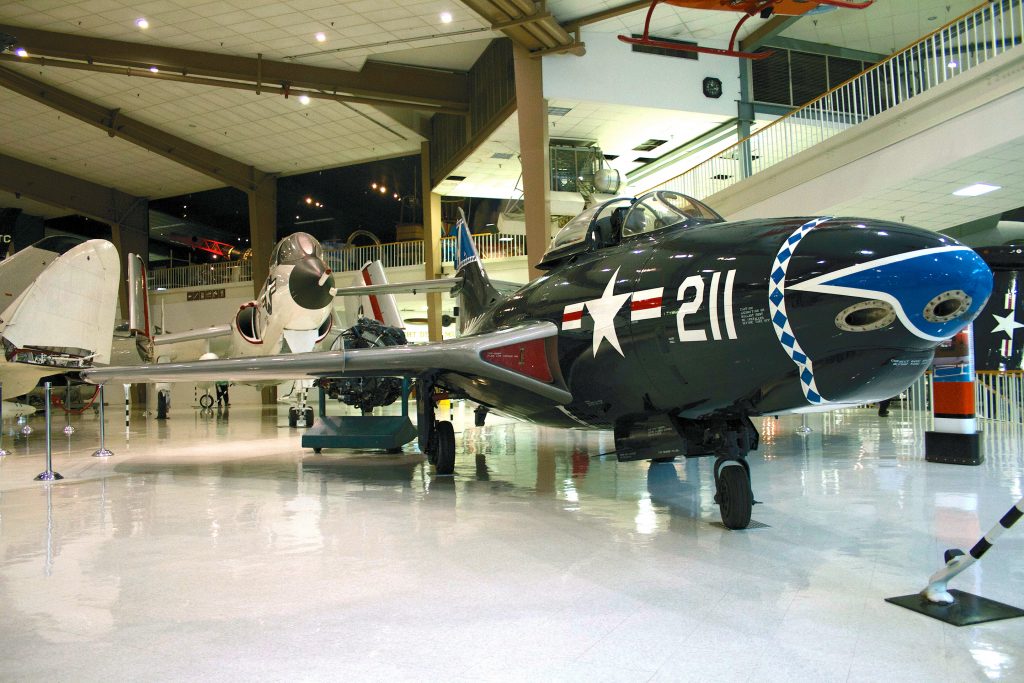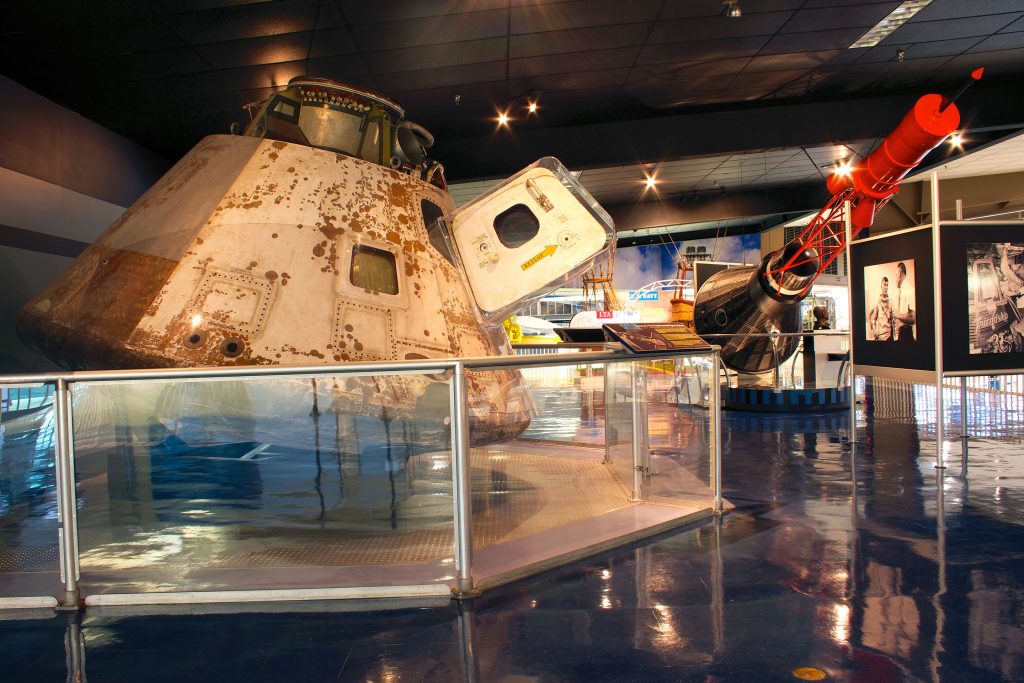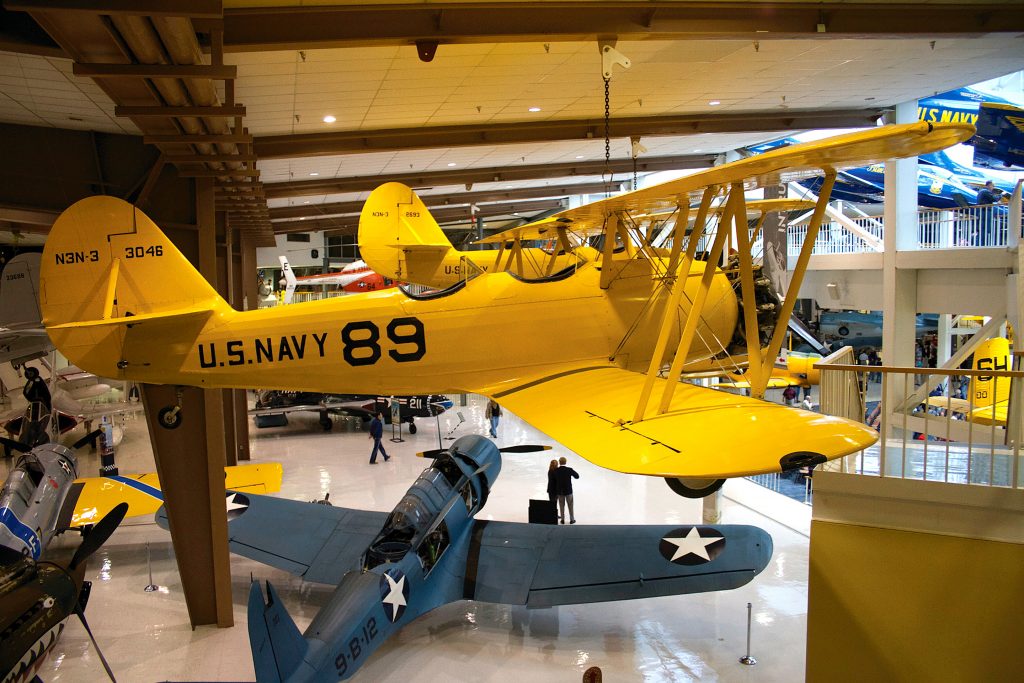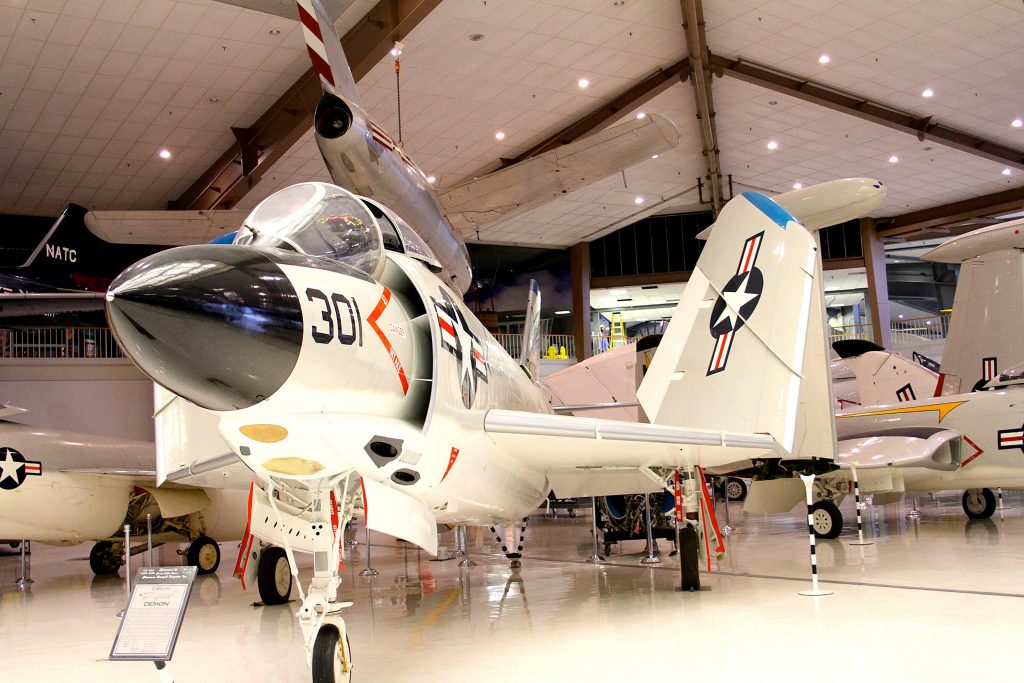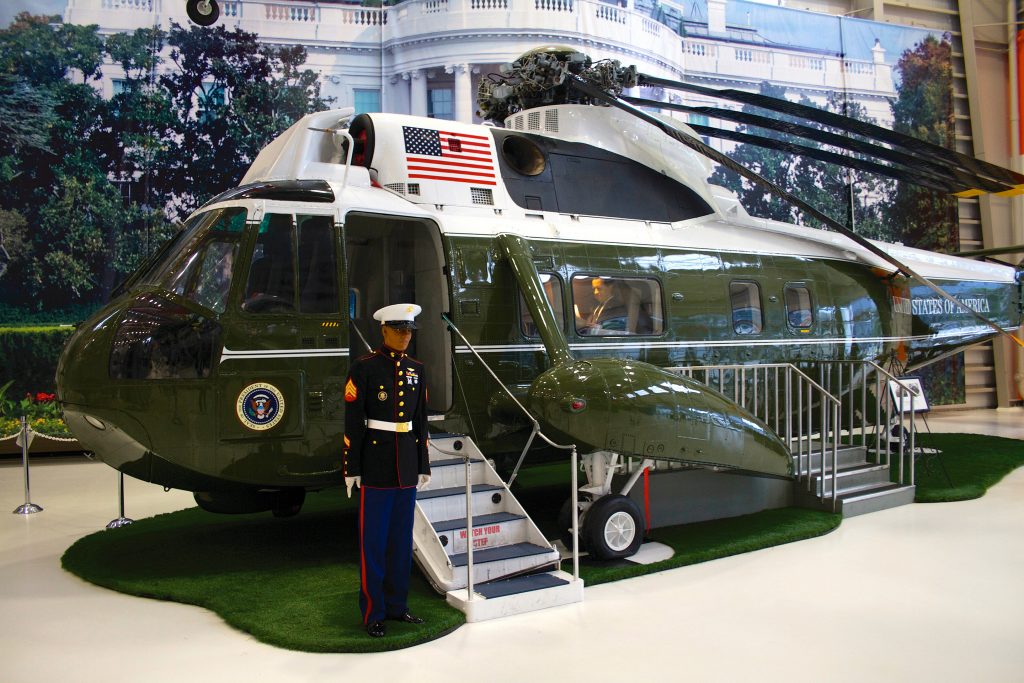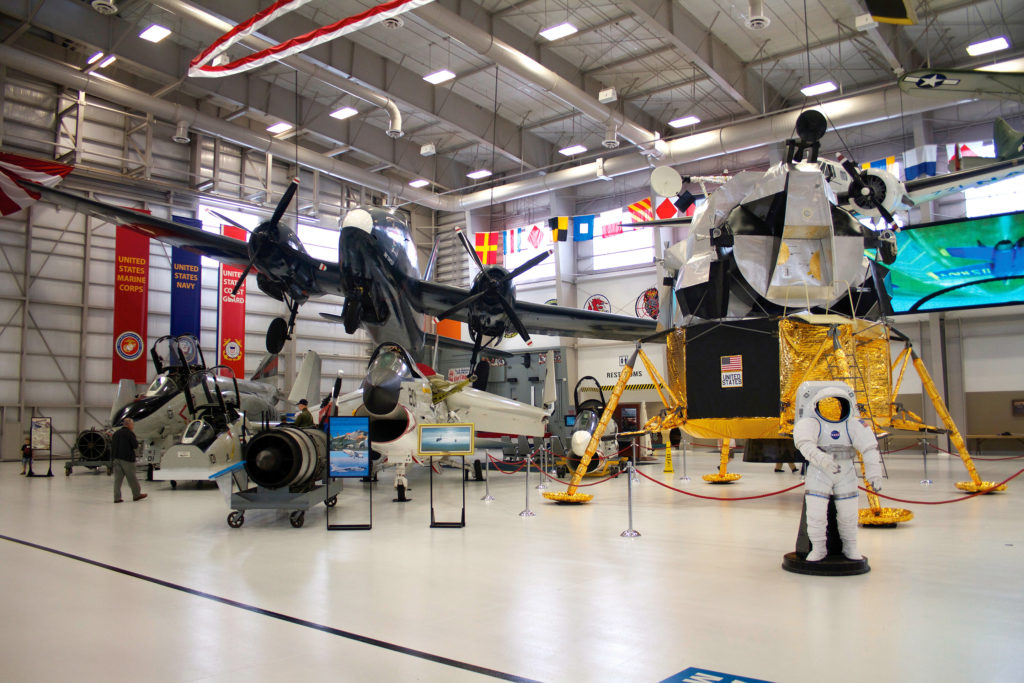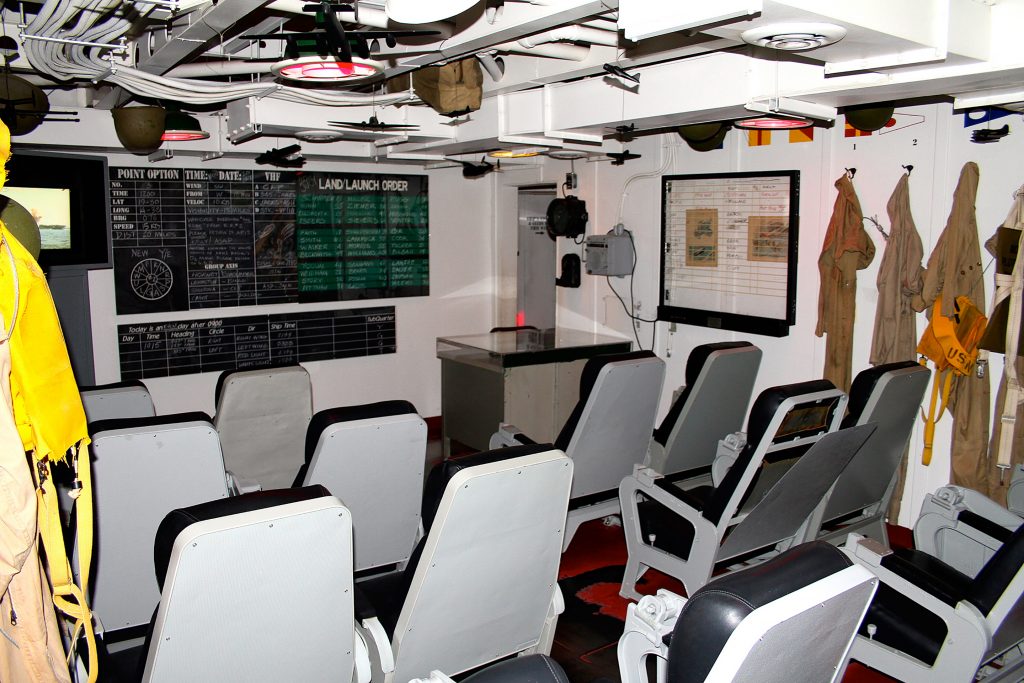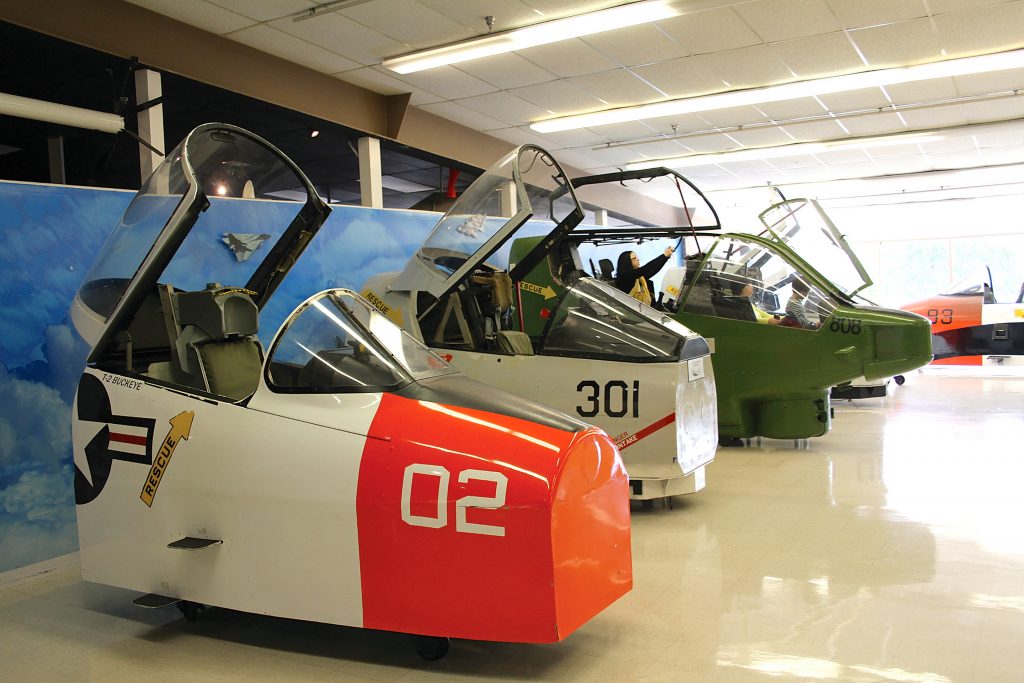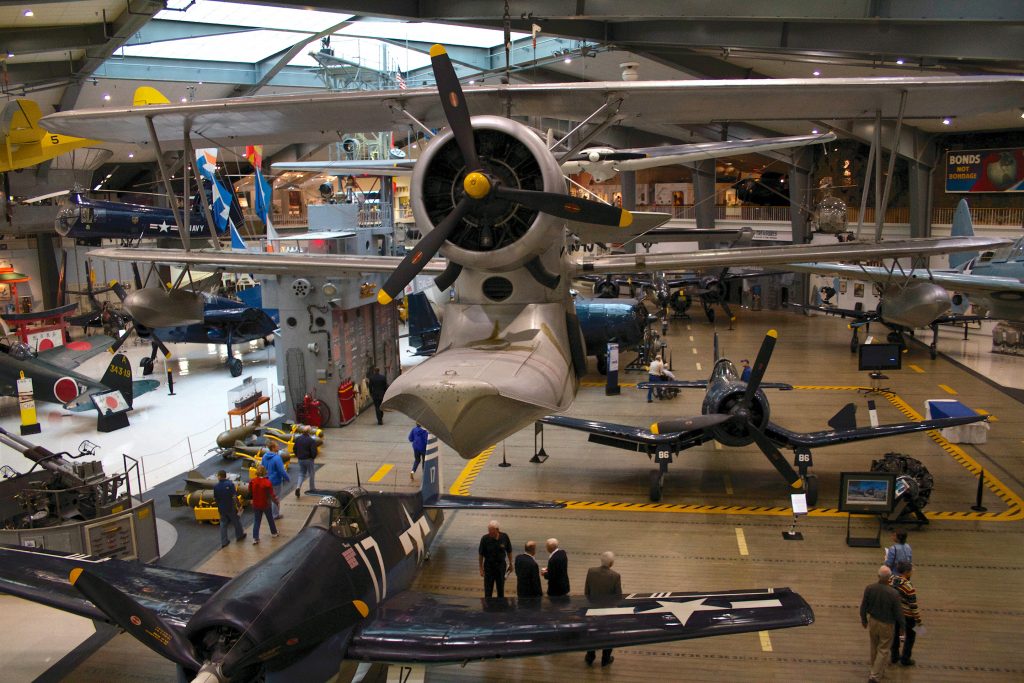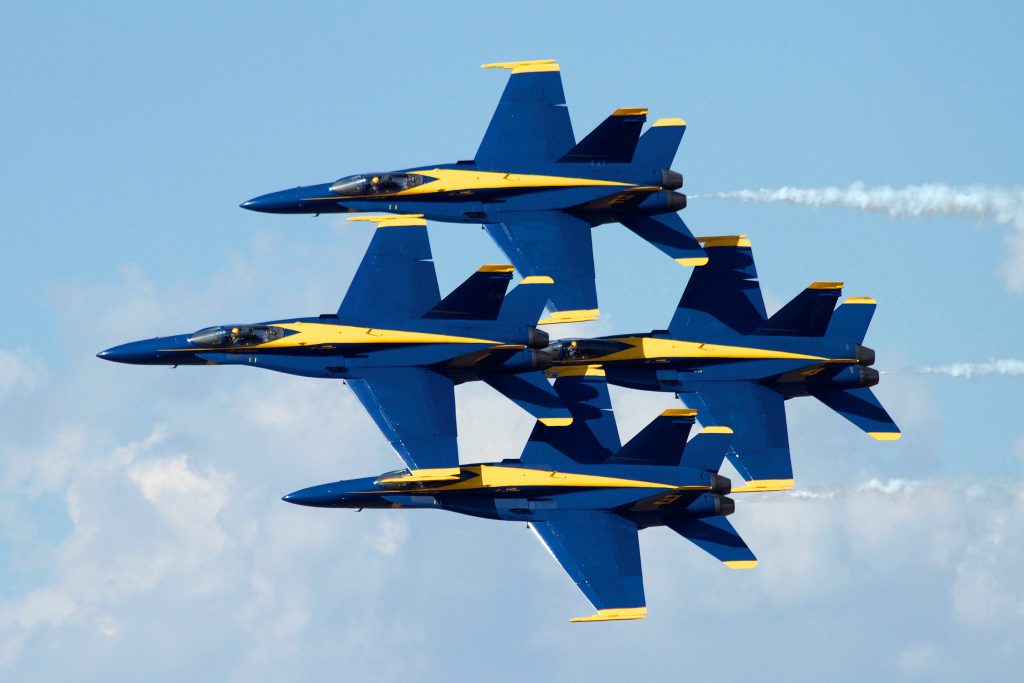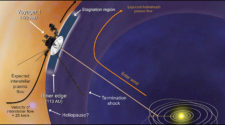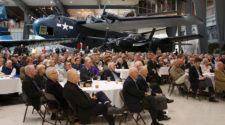Nestled along the coastline of the Florida Panhandle, nearly equal distance from historic Kennedy and Johnson Space Centers, is a place most well known for its sugar white sand beaches and the Navy’s Blue Angels. But Pensacola, Fla. has its own page in the annals of space exploration, as many of the astronauts from the Golden Age of space exploration first took to the skies above Naval Air Station Pensacola.
Naval aviation has also been at the cutting edge of aerospace expeditions, from the first successful crossing of the Atlantic by an aircraft to the exploration of the Arctic and Antarctic. The common denominator for those who participated in this exciting history was their training at Pensacola where they learned the unique skills required to fly from ships at sea, find distant targets and return to their moving, rolling and pitching “airfield,” often in bad weather and frequently at night.
The National Naval Aviation Museum, located aboard NAS Pensacola, deftly conveys that history to visitors as it transcends both time and space, from wood and fabric biplanes to modern jet aircraft and even the frontiers of outer space. The museum, which is open to the public, captures naval aviation’s heritage and brings its story alive.
With nearly 300,000 square feet of exhibit space, the museum is the world’s largest museum devoted to naval aviation. More than 150 beautifully restored aircraft representing the Navy, Marine Corps, and Coast Guard are on display.
Among the space artifacts to be seen at the museum are the Apollo command module that carried an all-Navy crew to Skylab, America’s first space station, and a Moon rock from the Apollo 17 mission, as well as a variety of other items. There is a new full-size replica of the Lunar Excursion Module located in Hangar Bay One. The Navy has been so well represented in the astronaut corps that both Skylab and the International Space Station have had a ship bell placed within them.
“The first American in space was a naval aviator,” said Gene Cernan who flew to space three times (Gemini IX, Apollo 10, Apollo 17). “The first American to orbit the Earth was a naval aviator, a Marine but wore Navy wings of gold. The first American on the Moon was a naval aviator. The last American to leave his footsteps on the surface of the Moon was a naval aviator. Five out of six lunar landings were commanded by naval aviators.
“It’s not that naval aviators are any better than Air Force aviators. But I think the differentiating factor is that in naval aviation we do two things. We give a lot of decision making to the naval aviator, as to his fate, as to accomplishing his mission,” continued Cernan. “When the time comes to make a decision that you have to make, you’d better make it.
“The other thing I really think is that the next step beyond just flying supersonic, or landing, or flying high-performance aircraft and whatever, is the requirement to take that machine which you are flying in the middle of an ocean, at night, and land aboard an aircraft carrier. I’m telling you that I believe every Air Force pilot that was in the space program could have done it having been given the chance, but he didn’t. And he didn’t have that kind of requirement placed upon him throughout his career. Where Navy guys, you had to perform, or you busted your butt. It was that simple. Because when you are coming aboard a carrier at night, it is only you and your maker. And it’s like that landing on the Moon. Either you are going to do it, or you’re not going to do it,” said Cernan.
The National Naval Aviation Museum began with the vision of one man who got his first taste of flying in Pensacola. In 1955, Magruder H. Tuttle, a Navy captain, was concerned that the training curriculum offered the students no exposure to the history of naval aviation. A small museum was proposed and by June 1963, it had opened its doors. It was a modest start as with a mere 8,500 square feet, only eight aircraft were able to be displayed.
The expanding collection of aircraft quickly overwhelmed the capacity of the museum which has undergone several expansions. During the past 50 years, the museum has acquired more than 700 aircraft.
Among those on display are record-setting aircraft like the NC-4 flying boat, the first plane to fly across the Atlantic, as well as combat veterans, including the SBD Dauntless that flew at the Battle of Midway, two Vietnam MiG-killers, an A-7 Corsair II that logged missions over Iraq during Operation Desert Storm and the last F-14 Tomcat to fly a combat mission.
Between March and November each year, the Navy’s legendary Blue Angels flight demonstration squadron can be seen practicing precision maneuvers in the skies above the museum.
Visitors are welcome to climb inside one of the 35 actual cockpit trainers, flip the switches, turn the knobs and let their imaginations soar. There also is a motion-based simulator ride which allows visitors to experience horizontal rolls, longitudinal pitches and vertical climbs. The museum also contains an IMAX theater with daily showings of ‘The Magic of Flight’ which takes viewers airborne with the Blue Angels.
More than 4,000 uniforms, flight gear, weaponry, medals and decorations add a personal touch to the museum. ‘Home Front USA,’ ‘Pacific Air Base’ and ‘The Hangar Bay,’ provide visitors an opportunity to walk through a small-town Main Street (circa 1943), a U.S. Marine Corps expeditionary airfield during the Guadalcanal campaign and the hangar bay and below-deck spaces of a World War II aircraft carrier.
Many of the museum’s volunteers are retired or active duty personnel who bring life to the displays as they give guided tours and recite their very own sea tales.
What began as one man’s vision to endow young aviators with an appreciation of their heritage, has evolved over the years into a steadily growing and expanding institution of national significance.

